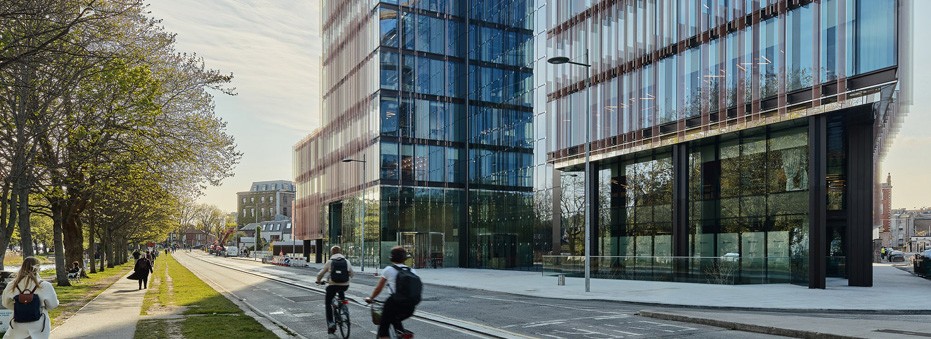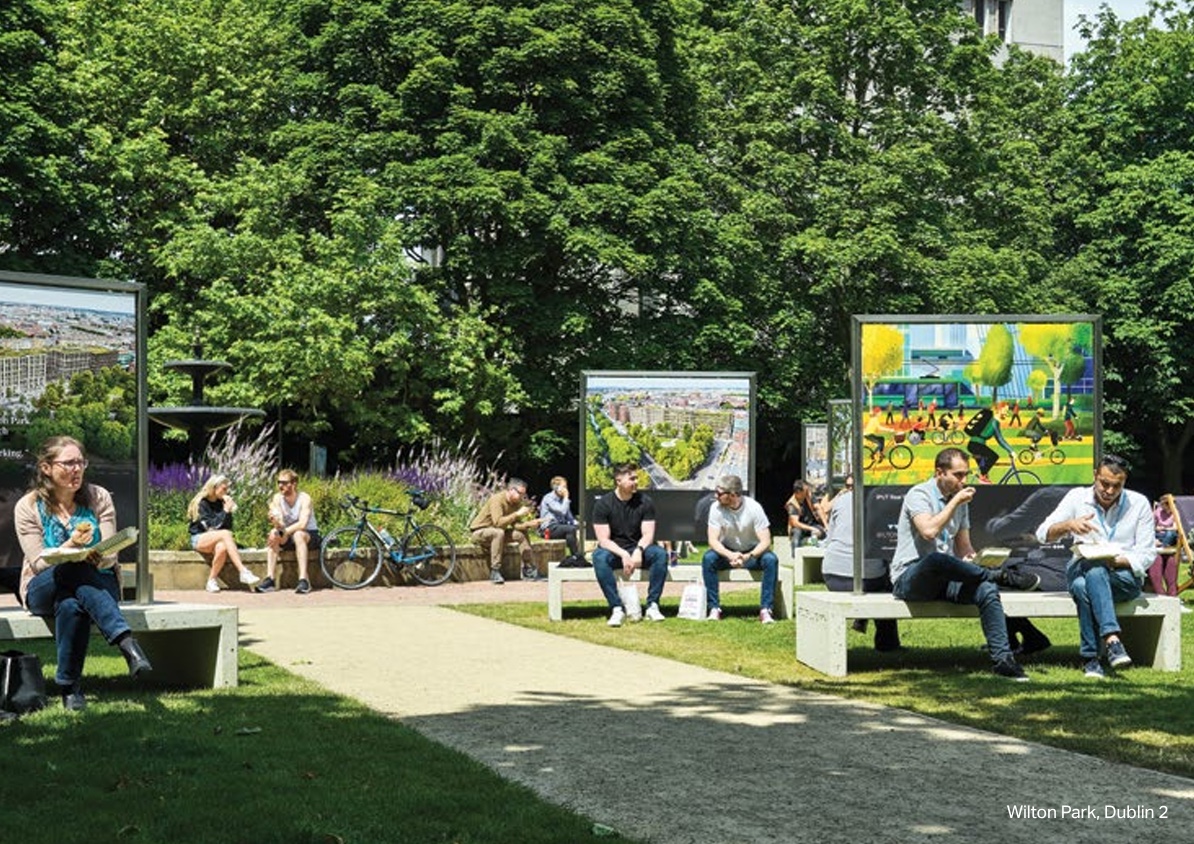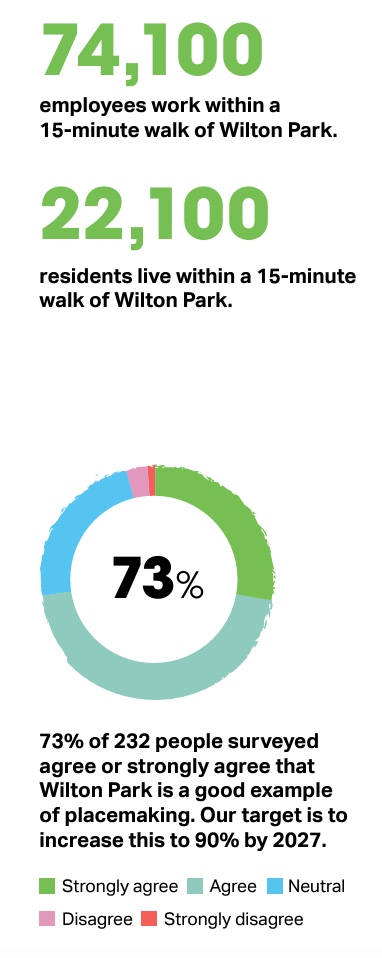Get updates from The Developer straight to your inbox Yes, please!
“How do we prove this is the right thing to do?” Making Impact in Wilton Park, Dublin
IPUT Real Estate Dublin shares their methodology for long-term social impact research project Making Impact to evaluate the social, cultural, economic, and environmental value of their investment in Wilton Park, Dublin

The Developer
“We believe the focus on the S is as important as the E and G,” says Marie Hunt, Head of Research at IPUT Real Estate Dublin “That is the background of where this research came from.”
Hunt is speaking at Festival of Place: Social Impact 2024, an independent event that was part-sponsored by IPUT Real Estate Dublin, at which they were invited to share the findings from their first year of a new longitudinal social impact study, Making Impact.
IPUT Real Estate Dublin is the largest owner of offices and logistics assets in Dublin and a long-term investor with a 57-year track record in real estate. The fund owns and manages a portfolio comprising over 5.1 million sq ft, with a value of €2.8 billion.
Hunt is a well-connected chartered surveyor and senior executive who is well respected in Irish business and property circles. In 2022, she took on the new role of Head of Research at IPUT Real Estate Dublin where she focusses on research, thought leadership and strategy to support the Fund’s investment, placemaking and sustainability efforts.
For a new five year study into social impact investment, IPUT is working with three standout firms – Gehl, Hassell and PRD – to evaluate the social, cultural, economic, and environmental impact of investment into the Fund’s €300 million Wilton Park development in Dublin, using it as a case study.
“We’re leading the market in this type of thinking and holistic approach to development,” says Hunt.
The Wilton Park development saw the demolition of Brutalist buildings that are being replaced by new office blocks already fully let to LinkedIn. The development includes a public park that according to Hunt was previously overgrown and locked to the public with zero access. The new development will include a public square and park.
“There are 22,000 residents and 74,000 employees within a 15-minute walk of this park,” says Hunt. “We are servicing a huge community with the ambition to bring life back into this part of Dublin and deliver a return for our investors and shareholders, but also something beyond that return.”
Hunt expresses some regret that the social impact study began part-way through development. “Ideally you would be starting with a blank sheet of paper. We didn’t have that luxury because the scheme was already designed and indeed underway when we commenced this piece of research.” However the impact of the public realm improvements can be measured as the park and public spaces come into use, due to complete this summer.
Hassell is leading the research team with PRD and Gehl. Together they form a multidisciplinary partnership with different expertise. Appointed in 2022 to study the Wilton Park neighbourhood over a 5-year period, the methodology measures the value created in four pillars – social, cultural, economic, and environmental.
“During development of Wilton Park, [IPUT Real Estate Dublin] were able to provide students with work experience that is linked directly to Wilton Park. This has given the students a chance to learn about landscape design, urban planning and practice"
The research is focussed on public areas around the buildings. There are 20 different reporting areas on which the consultants are collecting data (property values, footfall, training opportunities, belonging, etc) using over 70 quantitative and qualitative individual metrics, with the responsibility for collecting those figures divided between Gehl, Hassell and PRD.
Project lead for the Making Impact study Camilla Siggaard Andersen leads Hassell’s research across the urban design, mobility, environment & communities sectors.
“We are measuring cultural engagement by how many visitors come to view public installations, for example," says Andersen. “If IPUT are planting 20 trees, that’s a physical investment in place, we would hope to see that nature engagement improves and that the environmental quality of the place improves, and that will drive more footfall or see people feel more connected to the place."
Anderson says the findings are all recorded to track the changes year-on-year, with the most interesting findings summarised in the annual report. Described as a continuous feedback loop, the hope is that any negative impacts can be acted on.
“Great places are not just about paving stones and benches, or their yoga classes and coffee shops, or maintenance regimes; great places are all of those things working together," says Andersen. "The first step to making an impact is making an effort. We have to try and fail and try and try again to eventually succeed and get it right."
The aim of the study is to demonstrate, using an evidence-based approach, the long-term social value that investment in the public realm creates, and how vibrant, attractive developments improve the quality of life. IPUT say they hope their quantitative and qualitative metrics have the potential for widespread and global application.
The first year’s report tracks the initial changes during this construction period. One of Andersen’s takeaways from the findings was that small gestures can go a long way, referring to the provision of moveable deck chairs and a decent cup of coffee.
“There’s no legislation making us do this, we’re doing it because it’s the right thing to do," says Hunt. “The question is how do we prove to our investors and shareholders that doing this is the right thing to do."
Find out more
- View the presentation
- Download the IPUT Making Impact report
- Listen to the IPUT podcast
Sign up to our newsletter
Get updates from The Developer straight to your inbox
Thanks to our organisation members
© Festival of Place - Tweak Ltd., 124 City Road, London, EC1V 2NX. Tel: 020 3326 7238


